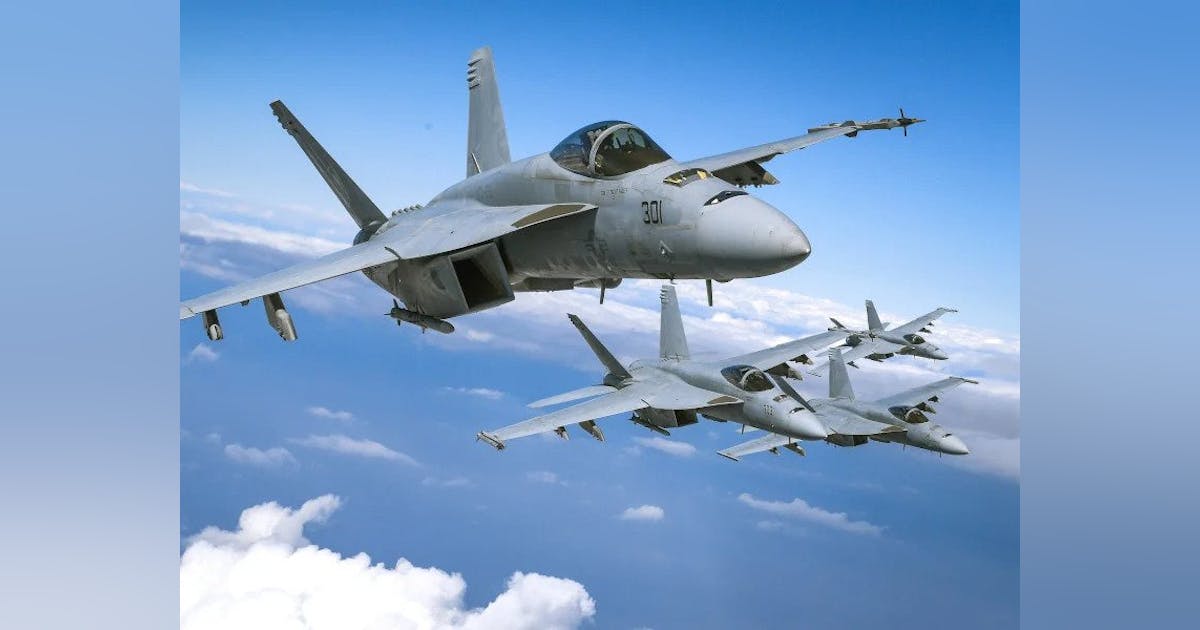DTP-N from the L3Harris Technologies Inc. Space & Airborne Systems segment in Palm Bay, Fla., is a high-performance data and signal processing computer.

PHILADELPHIA – U.S. Navy combat avionics experts are asking the Boeing Co. to provide components for data- and signal-processing targeting computers for the F/A-18E/F Super Hornet jet fighter-bomber and EA-18G Growler electronic warfare (EW) jet under terms of a $34.7 million order announced last month.
Officials of the Naval Supply Systems Command's Weapons Systems Support segment in Philadelphia are asking the Boeing Defense, Space & Security segment in St. Louis to provide 57 each of processor and target lo for the Distributed Targeting Processor-Network (DTP-N) system on Super Hornet and Growler aircraft.
The DTP-N from the L3Harris Technologies Inc. Space & Airborne Systems segment in Palm Bay, Fla., is a high-performance data and signal processing computer that bridges gaps between Hornet and Growler onboard and external data networks in real time. The DTP-N) is 17-times more powerful than the previous systems.
DTP-N helps reduce pilot workload by providing actionable information on the Super Hornet and Growler large-area display. It has the power to compute algorithms quickly to deal with the complex battlespace of the future, L3Harris officials say.
Related: Electronic warfare embedded signal processing introduced by Mercury in 6U VPX configuration
It provides performance scalability, technology insertion, and functional growth capability via an open-systems architecture design. It also has multiple levels of security and complies with standard electronics architectures for Super Hornet and Growler aircraft.
Multilevel security supports multiple security trusted computing enclaves on the aircraft, and provides secure interoperability among several subsystems.
The DTP-N improves mission processing, subsystem interfacing, display generation, and secure, multilevel information management. It hosts user-generated software with third-party and supplier-provided software.
The DTP-N computer provides a gateway from existing F/A-18E/F and EA-18G avionics to new external radio frequency tactical networks. Connection to the Tactical Targeting Network Technology (TTNT) through MIDS-JTRS Ethernet interfaces helps increase bandwidth to collect and share time-critical information using streaming video and still imagery.
Related: Rugged VPX stacking connectors for military avionics and embedded computing introduced by TE Connectivity
The DTP-N is an eight-slot 6U VPX avionics computer that can process information at speeds to 919 billion floating point operations per second. It has seven 10GBase-SR fiber-optic ports and 11 copper 10/100/1000Base-T Ethernet ports. The computer uses the VxWorks real-time operating system from Wind River Systems in Alameda, Calif.
The computer measures 9.35 by 14 by 7.6 inches, and weights 41 pounds. It meets VITA 46 and VITA 48.2 standards, as well as MIL-STD-1472, MIL-STD-704E, MIL-STD-461F, and MIL-STD-810.
On this contract Boeing will do the work in St. Louis, and should be finished by December 2026. For more information contact Boeing Defense, Space & Security online at www.boeing.com/company/about-bds, or the Naval Supply Systems Command's Weapons Systems Support segment at www.navsup.navy.mil/NAVSUP-Enterprise/NAVSUP-Weapon-Systems-Support.

 www.militaryaerospace.com
www.militaryaerospace.com
PHILADELPHIA – U.S. Navy combat avionics experts are asking the Boeing Co. to provide components for data- and signal-processing targeting computers for the F/A-18E/F Super Hornet jet fighter-bomber and EA-18G Growler electronic warfare (EW) jet under terms of a $34.7 million order announced last month.
Officials of the Naval Supply Systems Command's Weapons Systems Support segment in Philadelphia are asking the Boeing Defense, Space & Security segment in St. Louis to provide 57 each of processor and target lo for the Distributed Targeting Processor-Network (DTP-N) system on Super Hornet and Growler aircraft.
The DTP-N from the L3Harris Technologies Inc. Space & Airborne Systems segment in Palm Bay, Fla., is a high-performance data and signal processing computer that bridges gaps between Hornet and Growler onboard and external data networks in real time. The DTP-N) is 17-times more powerful than the previous systems.
DTP-N helps reduce pilot workload by providing actionable information on the Super Hornet and Growler large-area display. It has the power to compute algorithms quickly to deal with the complex battlespace of the future, L3Harris officials say.
Related: Electronic warfare embedded signal processing introduced by Mercury in 6U VPX configuration
It provides performance scalability, technology insertion, and functional growth capability via an open-systems architecture design. It also has multiple levels of security and complies with standard electronics architectures for Super Hornet and Growler aircraft.
Multilevel security supports multiple security trusted computing enclaves on the aircraft, and provides secure interoperability among several subsystems.
The DTP-N improves mission processing, subsystem interfacing, display generation, and secure, multilevel information management. It hosts user-generated software with third-party and supplier-provided software.
The DTP-N computer provides a gateway from existing F/A-18E/F and EA-18G avionics to new external radio frequency tactical networks. Connection to the Tactical Targeting Network Technology (TTNT) through MIDS-JTRS Ethernet interfaces helps increase bandwidth to collect and share time-critical information using streaming video and still imagery.
Related: Rugged VPX stacking connectors for military avionics and embedded computing introduced by TE Connectivity
The DTP-N is an eight-slot 6U VPX avionics computer that can process information at speeds to 919 billion floating point operations per second. It has seven 10GBase-SR fiber-optic ports and 11 copper 10/100/1000Base-T Ethernet ports. The computer uses the VxWorks real-time operating system from Wind River Systems in Alameda, Calif.
The computer measures 9.35 by 14 by 7.6 inches, and weights 41 pounds. It meets VITA 46 and VITA 48.2 standards, as well as MIL-STD-1472, MIL-STD-704E, MIL-STD-461F, and MIL-STD-810.
On this contract Boeing will do the work in St. Louis, and should be finished by December 2026. For more information contact Boeing Defense, Space & Security online at www.boeing.com/company/about-bds, or the Naval Supply Systems Command's Weapons Systems Support segment at www.navsup.navy.mil/NAVSUP-Enterprise/NAVSUP-Weapon-Systems-Support.

Boeing to provide 6U VPX signal-processing and targeting computers for Navy carrier-based combat jets
DTP-N from the L3Harris Technologies Inc. Space & Airborne Systems segment in Palm Bay, Fla., is a high-performance data and signal processing computer.


